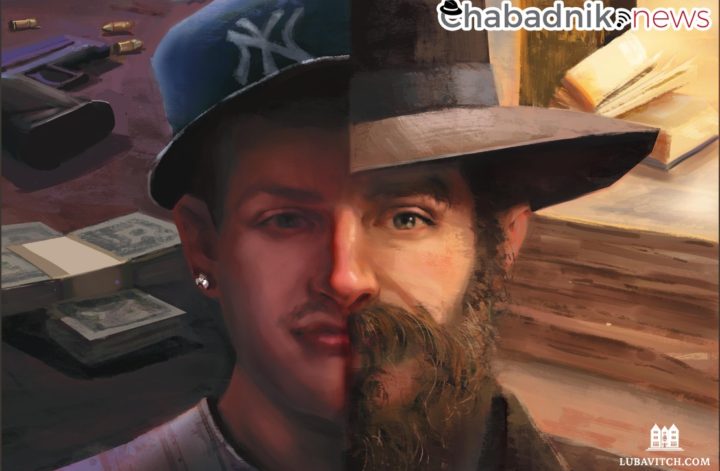1. A Kippah Is a Head-Covering
A kippah is a head-covering traditionally worn by Jewish men and boys as a sign of reverence and respect to G‑d.
2. It Is Also Called a Yarmulke or Koppel
Kippah (lit. dome) is the Hebrew word for skullcap. It is also referred to in Yiddish as a yarmulke, or less frequently as a koppel (lit. little cap).
According to many, yarmulke is a contraction of the Aramaic words yarei malka, “awe of the King” (referring to G‑d), since wearing it reminds usthat there is a Higher Being above us.
Read: What Does Yarmulke Mean?
3. It Is a Reminder of G‑d’s Presence
Wearing a kippah helps us remember that there is a Higher Being to whom we are held accountable. Wearing a kippah is required by Jewish law for for reasons of modesty and to distinguish ourselves as Jews,1 reminding us of our responsibility and privilege as members of the Chosen Nation.
Read: The Kippah: A Philosophical Perspective
4. Kippahs Come in a Variety of Sizes, Materials, and Designs
Kippahs come in various colors and designs, and are made from materials as diverse as velvet, suede, leather, and knitted yarn. Many sites offer personalized embroidering services and will add the images or words of your choice. (It is not uncommon to spot a boy with a kippah featuring his name.)
Some communities have developed kippah designs that are highly intricate works of art, such as those made by Jewish artisans from Yemen and Georgia, most of whom now live in Israel.
5. It Is Worn at All Times
The Talmud states that one should not walk the distance of four cubits bareheaded.2 A head-covering is also required when praying, reciting a blessing, or entering a synagogue.3 According to many authorities, head-coverings are required at all times (even when sitting in place and doing nothing).4
Read: My Son’s Badge of Honor
6. It Is Sourced in the Talmud
The practice to wear a kippah at all times comes from an anecdote in the Talmud in which a woman was told by astrologers that her son was destined to become a thief. To prevent this from happening, she insisted that he keep his head covered at all times, to remind him of G‑d’s presence and instill within him the fear of heaven. Once, while sitting under a palm tree, his head-covering fell off. Suddenly overcome by a burning desire to eat fruit from the tree which did not belong to him, it was in that moment he realized the strong effect wearing a kippah had on him.5
Read: What’s Up With the Kippah?
7. Some Cover the Head Completely
In certain communities, it was customary to wear large, tall kippahs that covered the head completely. Many Lithuanian scholars of yesteryear are pictured wearing such headgear. The kippahs of Bukharian Jewry are similarly famous for their large size, as well as for their intricate embroidery.
8. Some Also Wear Hats When Praying
In addition to wearing a kippah, many men also wear a hat when praying. Donning a hat is viewed as an act of respect; as recently as a few decades ago, when men went out in public, they would make sure to wear a hat. A hat is also reminiscent of the turban worn by the priests during the Temple service.
Read: Why Wear Both a Kippah and a Hat?
9. Women Do Not Wear Them
Women and girls do not wear kippahs. One reason for this is that the kippah is there to remind us of G‑d’s presence (see above). Women, who are more spiritually intuitive and possess more powerful faith, do not require a constant reminder.
Married women do cover their heads, albeit not with a kippah, and for different reasons.
Read: Why Do Jewish Women Cover Their Hair?
10. It May Be Discarded and Replaced
When a prayer book or other sacred object becomes worn out and unusable, it may not be discarded. Instead, out of respect for the object’s sanctity, it is carefully buried in a Jewish cemetery. (Many synagogues provide this service on behalf of their congregants.)
Despite the kippah’s special role in Jewish life, it does not possess any inherent holiness, and it may be discarded and replaced with another as needed.
Read: Proper Disposal of Holy Objects
11. A Printer Favored Lashes Over Walking Without a Kippah
Rabbis Pinchas and Shmuel Abba Schapiro, brothers and chassidic printers in the town of Slavita, were falsely accused of murder and arrested by the czarist police in 1839. As punishment, they were forced to run the gauntlet. While being led through two rows of vicious soldiers, Rabbi Shmuel Abba’s kippah fell off. Despite the ongoing blows, he refused to proceed until it was returned to him.
This story sent waves through the Russian Jewish community, inspiring many to disregard their discomfort and wear a kippah at all times.


